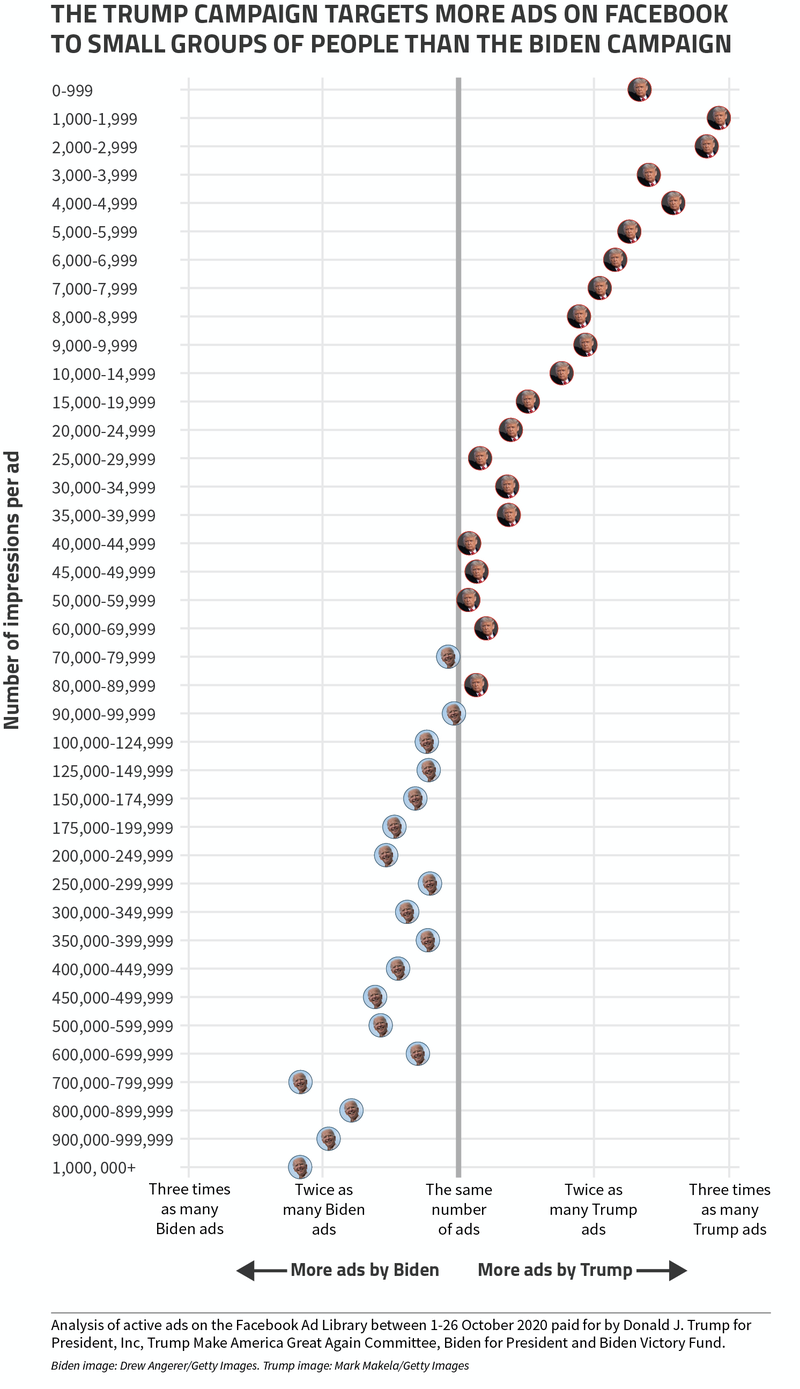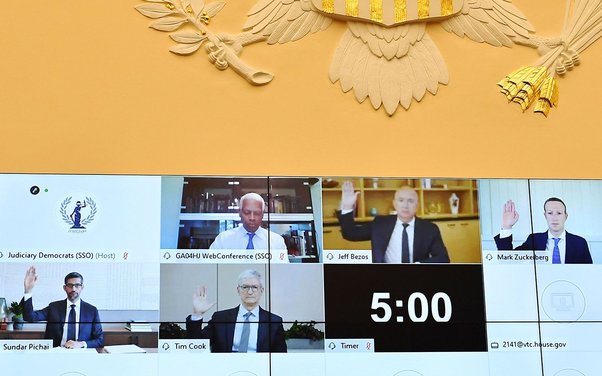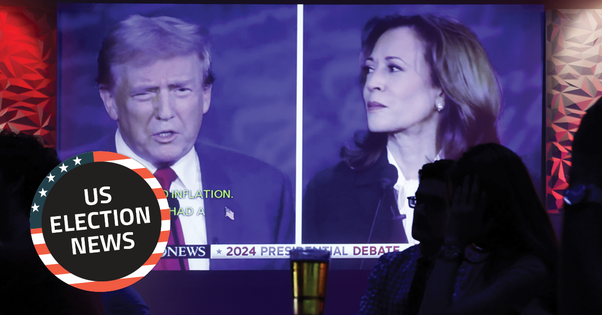We’ve recently launched a new campaign to take on Big Tech companies and their vast power over our democratic processes. One of our first campaign goals is to ban online political ads from being shown to small groups of people, a practice known as micro-targeting.
We believe that targeting online political ads to small groups of people harms democracy. It means that we generally only see ads that we agree with, helping advertisers play into our fears and vulnerabilities and creating echo chambers which are making us more and more polarised and even, in rare cases, radicalised. It allows political parties to say different, possibly contradictory things to different people, relies on highly intrusive gathering of data about our personal lives, and makes it extremely difficult for political parties to counter the other side’s arguments, something that’s essential for a healthy democracy.
It’s not just us who thinks this: two-thirds of social media users in key US swing states do too. Last month, we commissioned YouGov to poll 1,500 voters in the battleground states of Ohio, Pennsylvania and Wisconsin. They found that 68% of people think online advertisers should ensure that political ads are viewable by everyone. This held true across political parties, with 70% of people who voted for Hillary Clinton in the 2016 presidential election and 66% of those who voted for Trump agreeing that political ads should be able to be seen by everyone. People were also deeply uncomfortable with advertisers being able to target using personal characteristics such as income, sexuality and race. This data suggests that American voters across the board would support a ban on micro-targeted online political ads.
We know that targeted advertising is big business in the US. Recently the Republican National Committee proudly told a Washington Post reporter that it now has more than 3,000 data points on every voter.
So we wondered how the Trump and Biden campaigns had been targeting their ads on Facebook during the 2020 presidential election. Do they predominantly target ads to a wide group of people or to lots of narrow groups of people?
We set about looking at this by analysing recent data from the Facebook Ad Library, a searchable repository of ads on Facebook and Instagram. The Ad Library has a huge weakness in that it doesn’t include any information on how ads were targeted. It does, however, include some information on the numbers of people who have seen an ad, which is what we have used in our analysis. Here’s what we found.
For ads that were active at some point between 1-27 October 2020, the Trump and Biden campaigns spent roughly the same amount of money ($35m each), yet the Trump campaign had more than twice as many ads as Biden [1].
We looked at how many times ads by the Trump and Biden campaigns were shown to people on Facebook. We found that:
- There were more than twice as many ads by the Trump campaign than the Biden campaign that were seen by less than a thousand people (suggesting micro-targeting to a select demographic of people)
- There were more than twice as many ads by the Biden campaign than the Trump campaign that were seen by more than a million people

These findings don’t just hold true at the extreme ends of the graph - for ads that were seen less than a thousand times or more than a million times. They also show a clear pattern in between: the fewer people who saw a political ad on Facebook, the more likely it is that the ad was from the Trump campaign. Conversely, the wider the group of people who saw the ad, the more likely it is that the ad was from the Biden campaign.
In other words, it looks like while both presidential campaigns have targeted Facebook ads to small groups of people, the Trump campaign has done so more than twice as often. Given the threats to democratic and open debate that narrowly cast ads pose, we’re calling on governments to pass legislation banning micro-targeting for political ads.
This is not just about Facebook - we need enforceable rules that apply to all platforms. Leaving Big Tech companies to voluntarily regulate themselves is not good enough - by doing that, we are allowing important decisions about our democracies to be set by a tiny number of people in boardrooms, creating a patchwork of policies that can easily be reversed. What’s needed is a level playing field across all platforms, with regulatory oversight and penalties for breaching the law.
Notes
[1] For ads active at some point between 1 October and 7 am UTC on 27 October 2020, the total spend on Facebook adverts by the Trump campaign (ads that were paid for by Donald J. Trump for President, Inc. and Trump Make America Great Again Committee) was $34.6 million. The total spend on Facebook adverts by the Biden campaign (ads that were paid for by Biden for President and Biden Victory Fund) was $35.1 million. Facebook provides data on the amount spent on an ad as a range; we calculated these figures using the midpoint which means that these figures are an estimate. Over the same time period, looking at ads paid for by the same accounts, the Trump campaign had 134,779 ads on Facebook whereas the Biden campaign had 62,131 ads.


